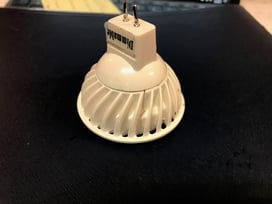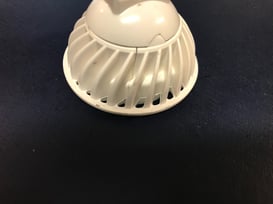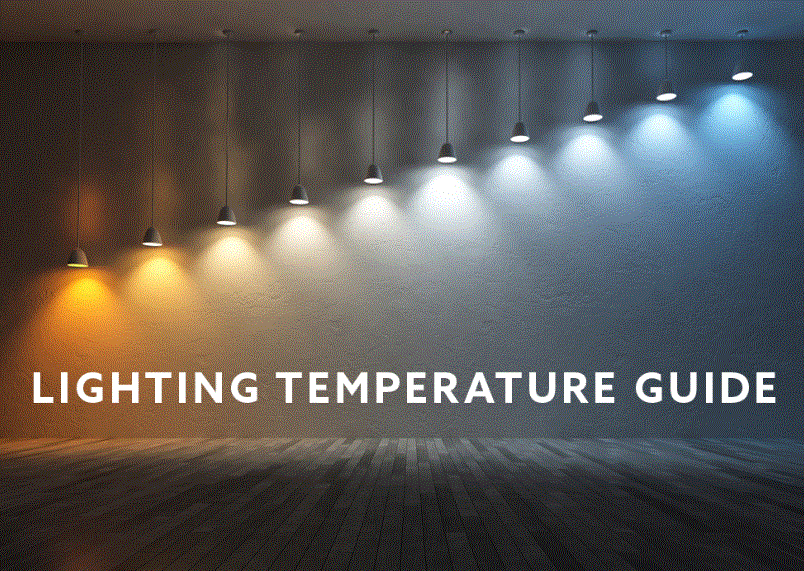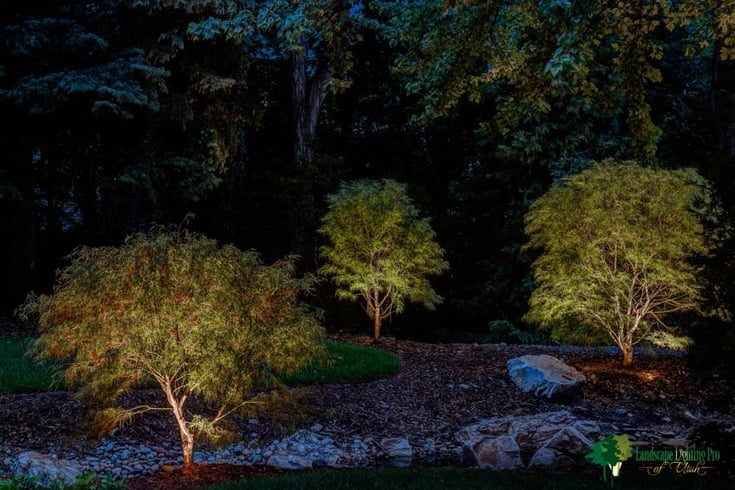Most common problem with LED landscape lighting is the bulb
There’s no question that LED landscape lighting can beautifully accent your home and property. The real issue is that not all LED bulbs are created equal.
If you want to learn how to avoid the biggest problem with LED landscape lighting, you’ll want to pay close attention to the LED bulb you select.
The most common problem with LED landscape lighting is the bulb because it either fails to continue working or creates poor lighting design.
There are two reasons why people’s LED landscape lights fail: poor quality & taking a one-size-fits-all approach.
- From a quality standpoint, the landscape lighting fails because low-quality bulbs fail/don’t last.
- From a design standpoint, the landscape lighting can fail when the bulbs all create the exact same effect (we’ll explain more about this later on).
Selecting a low-quality bulb and approaching the lighting with a one-size-fits-all mentality is a recipe for a poor lighting system.
In short, one of the biggest problems we see in landscape lighting is often caused by the LED bulbs people put in their fixtures.
Quality
With a seamless design and a well-thought-out plan, your lighting will look spectacular.
But if you select a low-quality LED bulb, your beautiful lighting will be short-lived.

Just about anything can be found online at a low price point.
If you look online right now for LED landscape lighting bulbs, you’ll find countless low-price options.
In my experience, you can’t have high-quality performance & a low price. The two concepts simply aren’t synonymous.
High quality + low price point = Oxymoron.
1. Failures
The biggest issue with lowly priced LED bulbs is that they aren’t built to withstand the outdoor environment.
There are two things that will cause an LED lamp to fail: temperature and moisture. In the outdoor environment, these two factors are unavoidable.
A well-engineered fixture will keep moisture from reaching the LED. But withstanding high and low temperatures is really dependent upon how well the LED is built and engineered.
Heat is difficult to avoid. We all know how hot summer can be. When the sun shines down on a metal fixture in the middle of summer, it gets hot – really hot.
An LED is an electronic device. When an electronic device overheats, it fails. The drivers, resisters, diodes, transistors, integrated circuits, etc., have to be able to take the heat. If these individual components aren’t high quality, they will surely fail. If the housing around the bulb isn’t good at dissipating heat, the bulb will struggle to survive.
Cold temperatures present another challenge.
The picture below is of a low-price point LED bulb that failed due to cold temperatures. If you look closely, you can see the places where the plastic housing cracked in three places after enduring the freeze-thaw cycles of winter.


This failed LED bulb was taken from a client’s home. It had a sticker that said ‘dimmable’ on one side and ‘outdoor rated’ on the other.
However, the plastic housing couldn’t handle the outdoor temperatures, so it failed.
Many low-cost LED bulbs online claim to be outdoor rated, but they rarely stand up to the elements. We replace countless low-cost LED bulbs every season.
2. Color changes
Another issue with low-price point LED bulbs is how well they maintain their initial Kelvin temperature (Click here to learn more about which color temperature is best for your outdoor lighting).
Kelvin temperature refers to the character of the light in terms of color.

When you choose a warm white LED bulb, you want it to stay that color for the life of the bulb.
However, the color rendering of some LED bulbs can fade over time, causing the light to become cooler.
This can be a problem if you want a consistent color temperature throughout your home.
We had a client who had this problem. He purchased some LED bulbs online that were supposed to be warm white, but over time the color started to fade and the bulbs became cooler.
Eventually, all of his lights were emitting a pale blue light. We replaced his bulbs with new ones that wouldn’t unexpectedly change colors.
3. Longevity of quality LED Bulbs
We’ve specialized in low-voltage outdoor lighting for a long time.
We’ve seen the good, the bad, and the ugly that can result from different LED bulbs.
Take it from us, It’s worth spending a little more for an LED at a higher price point if it means it will last and continually look good.
Most importantly, buying a quality LED bulb will leave you with less stress. Having to continually battle with your lighting system to keep it working can be a hassle.
With superior-performance LED lamps, you can spend less time trying to figure out why your landscape lights aren’t operating correctly, and more time pursuing other things.
Beautiful lighting isn’t one-size-fits-all
One of the key elements of a good lighting design is the design itself: Seeing and experiencing something beautiful at night is the goal.
If the design is going to fail, then what’s the point?
The same light bulb shouldn’t be used in every single fixture unless they are all lighting the exact same object and trying to achieve the exact same effect.
What do I mean by the same light bulb?
For a simple spotlight, we have 30 different bulb options we can place in the fixture depending on what we are illuminating, and the effect we are trying to achieve.
For example, a small ornate tree, like a Japanese maple should be lit with a different lighting approach than a large established cottonwood tree.
In the picture below, you can see how these small delicate trees are lit with a single softly diffused light, while a large towering tree will require multiple lights with a lot more punch.

Beam spread, lumen output, and Kelvin temperature should all be taken into consideration when crafting a tailored lighting effect.
In our company’s lighting designs, our light bulbs aren’t a one-size-fits-all. We use LED bulbs with multiple options so each piece in the landscape can be made beautiful when the light hits it appropriately.
When you purchase a six-pack of LED bulbs online, you are purchasing six of the exact same bulb. unless you have six trees in your landscape that are all exactly the same and happen to conform to the lighting effect the six bulbs create, you run the risk of the lights all looking too intense. Often the lamps sold in bulk have narrow beam spreads and pack too much punch.
Landscape lighting is like a game of golf
LED bulbs are like golf clubs.
Just like you need the right club for the shot, you need the right bulb for the job. If you use the wrong bulb, you won’t get the desired effect.
Just like you wouldn’t use a driver to putt, you wouldn’t use a flood light to light up a small tree.
A professional landscape lighting designer can help you choose the right bulbs for your needs.
Don’t try to learn landscape lighting on your own. Consult with a professional and get the most out of your lights.
Landscape Lighting Makes All The Difference
At Landscape Lighting Pro of Utah, the art of outdoor illumination is a real passion we work to perfect. Designing elegantly bespoke landscape lighting systems is simply all we do.
For over 20 years, our award-winning team of designers and craftsmen have striven to bring the best outdoor lighting experience possible to people’s homes and businesses across the Wasatch Front & beyond.
Located in Midvale, Landscape Lighting Pro of Utah installs, maintains, and repairs lighting systems throughout Utah’s residential areas, including Salt Lake City, Park City, Draper, Davis, and Utah Counties.
If you have an upcoming project you’d like help with, call (801)440-7647 for more information, schedule a free consultation, or feel free to simply fill out a contact form.
Salt Lake City (Midvale)
801-440-7647
St. George
435-932-6627
©2025 Landscape Lighting Pro
Privacy Policy
Cookie Policy